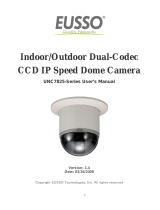
Documentation resources
This section provides information about the documentation resources for your system.
Table 6. Additional documentation resources for your system
Task Document Location
Setting up your system
For information about installing the system into
a rack, see the Rack documentation included
with your rack solution.
Dell.com/poweredgemanuals
For information about turning on the system
and the technical specifications of your
system, see the Getting Started With Your
System document that is shipped with your
system.
Dell.com/poweredgemanuals
Configuring your system For information about iDRAC features,
configuring and logging in to iDRAC, and
managing your system remotely, see the
Integrated Dell Remote Access Controller
User's Guide.
Dell.com/idracmanuals
For information about installing the
operating system, see the operating system
documentation.
Dell.com/operatingsystemmanuals
For information about understanding
Remote Access Controller Admin (RACADM)
subcommands and supported RACADM
interfaces, see the RACADM Command Line
Reference Guide for iDRAC.
Dell.com/idracmanuals
For information about updating drivers and
firmware, see the Methods to download
firmware and drivers section in this document.
Dell.com/support/drivers
Managing your system For information about systems management
software offered by Dell, see the Dell
OpenManage Systems Management Overview
Guide.
Dell.com/openmanagemanuals
For information about setting up, using,
and troubleshooting OpenManage, see the
Dell OpenManage Server Administrator User’s
Guide.
Dell.com/openmanagemanuals
For information about installing, using, and
troubleshooting Dell OpenManage Essentials,
see the Dell OpenManage Essentials User’s
Guide.
Dell.com/openmanagemanuals
For information about installing and using Dell
System E-Support Tool (DSET), see the Dell
System E-Support Tool (DSET) User's Guide.
Dell.com/DSET
For information about installing and using
Active System Manager (ASM), see the Active
System Manager User’s Guide.
Dell.com/asmdocs
2
Documentation resources 9





















